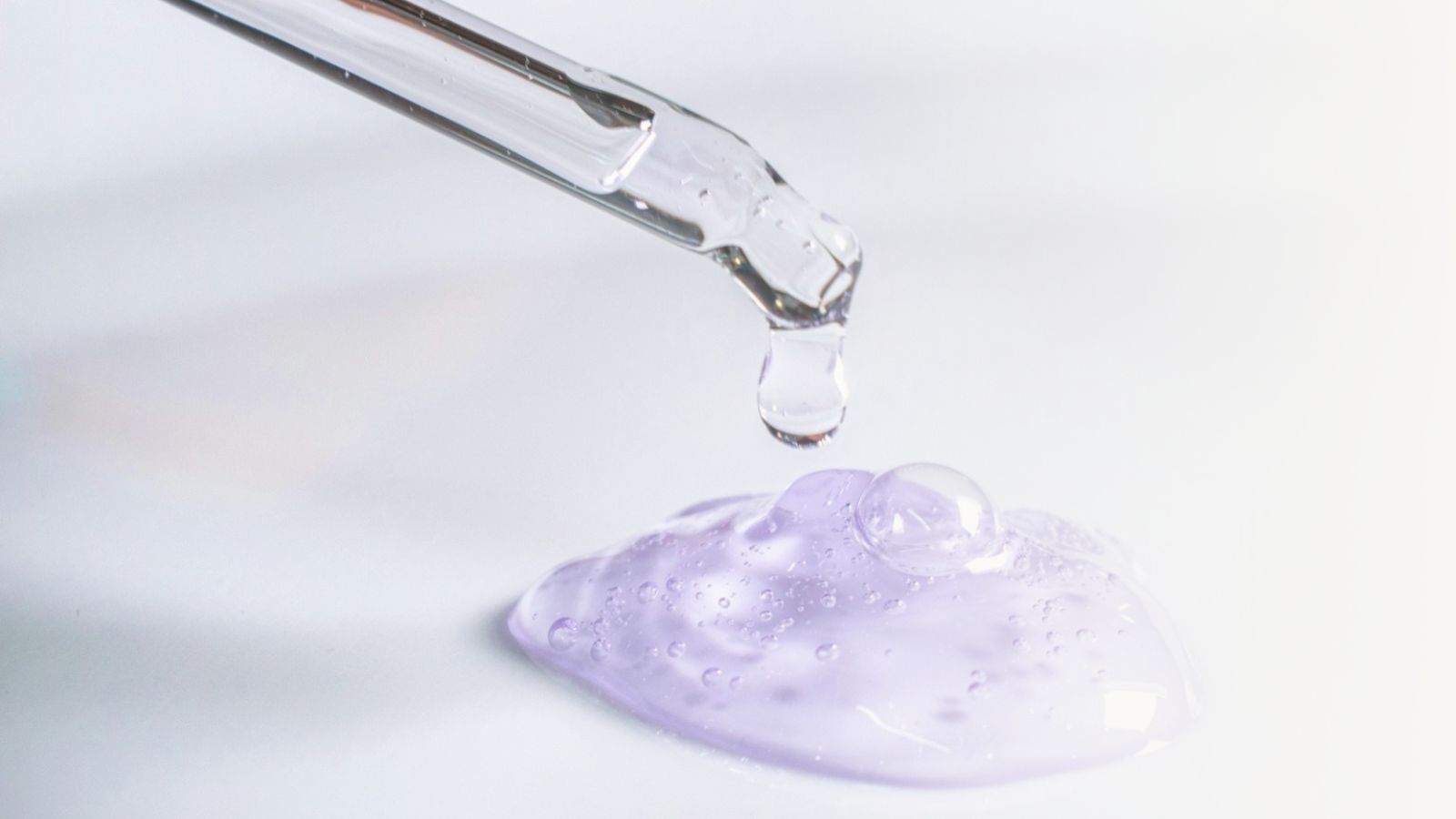When it comes to glow, few ingredients spark as much curiosity—or confusion—as vitamin C. Some swear it’s a must-have, others quietly skip it. But when used with intention, this antioxidant does more than brighten — it plays well with hydrating layers, blends easily into barrier-focused routines, and earns its spot without trying to steal the show.
This guide breaks down what vitamin C in skincare actually does (and doesn’t), how to use it without overthinking, and what to pair it with for glow that feels real—not filtered.

Quick heads up: This post contains affiliate links, which means we may earn a small commission if you choose to shop through our links — at no extra cost to you. As an Amazon Associate, we earn from qualifying purchases. Thank you for supporting GlamourTip and future glow guides!
No. 1
What Does Vitamin C Actually Do in Skincare?
Why this glow ingredient earns a permanent place in our glossary.
Vitamin C in skincare isn’t just about brightness — it’s about balance. At its core, this ingredient plays a supportive role in how your skin defends, renews, and reflects light. Often described as a powerhouse antioxidant, it works best when viewed not as a solo act, but as part of a larger glow system: hydration, protection, and recovery.
Paired with a barrier-respecting routine — especially one rooted in hydration and SPF — vitamin C becomes less about chasing instant results and more about consistency.
It’s the kind of ingredient that complements, rather than overpowers, helping skin stay resilient and radiant over time.
No. 2
When (and How) to Use It
Timing and texture matter more than you think.
While vitamin C is often labeled as a “morning serum,” there’s more nuance behind when and how it’s best absorbed. For most routines, daytime application makes sense — especially when paired with SPF — but what matters even more is how your skin is feeling and what textures it responds to.
If your barrier is compromised or your skin feels tight and reactive, layering vitamin C solo might not land well. Instead, consider sandwiching it between deeply hydrating layers — like an essence before, and a cushiony moisturizer after. The texture of your formula (watery serum vs. oil-based emulsion) can also influence how your skin tolerates it, especially if you’re new to this ingredient.
Why It Matters
The effectiveness of vitamin C doesn’t just come from its percentage or pH — it comes from how it fits into your routine. Choosing the right moment, texture, and skin state makes all the difference in whether this glow-ingredient feels supportive or sensitizing.
GLOW TIP If vitamin C ever feels too intense, apply a hydrating layer first — like a toner or essence — to soften its landing.
REACH FOR Beauty of Joseon Light On Serum Vitamin C — this beginner-friendly blend pairs vitamin C with centella extract, delivering radiance without overstepping sensitive skin. Its lightweight, almost watery texture makes it easy to layer — especially after a hydrating essence or mist.
No. 3
What to Pair It With — and What to Avoid
It’s not just about what you use — but how you layer it.
Vitamin C may be a solo standout, but it shines brightest when it plays well with others. The right supporting cast can enhance the texture, tolerance, and overall glow factor of your routine — while the wrong combinations may invite unwanted irritation or imbalance.
Hydrating ingredients like hyaluronic acid or glycerin? A great match. Barrier-reinforcing friends like niacinamide or ceramides? Even better. But pair it with too many exfoliants or retinoids, and you risk pushing your skin past its comfort zone — especially if you’re still repairing a compromised barrier.
Why It Matters
Layering isn’t about what’s trendy — it’s about chemistry, texture, and tolerance. Vitamin C doesn’t need to compete with exfoliants or retinoids to earn its glow badge. Pairing it with calming or hydrating formulas can soften its intensity and make your routine feel more seamless. Over-layering, on the other hand, often leads to over-exfoliation or reactivity — especially for barrier-stressed skin.
GLOW TIP If your skin is in recovery mode or feels reactive, try using vitamin C on alternate days from stronger actives — not side by side.
REACH FOR Naturium Vitamin C Complex Serum — this well-rounded serum blends multiple vitamin C forms in a stabilized, fragrance-free base. Its formula layers easily without a tacky finish, making it ideal for pairing with moisturizers or barrier-supporting ingredients like niacinamide or peptides.
No. 4
Choosing the Right Format for Your Skin
Not all vitamin C serums are created equal — and that’s a good thing.
From lightweight essences to richer creams and oils, vitamin C comes in more than one form — and not every texture will suit every skin type. Serums tend to dominate the category, but they’re not the only way to glow. If your skin prefers less intensity or needs added comfort, emulsions or creams may offer a gentler way in.
Texture aside, the specific type of vitamin C used — like ascorbic acid, magnesium ascorbyl phosphate, or THD ascorbate — can affect both experience and compatibility. Potency doesn’t always equal better results; what matters most is how your skin responds over time.
Why It Matters
Vitamin C formulas are often treated as one-size-fits-all, but texture and stability play a huge role in how well they integrate into a routine. A dry-skin-friendly cream may soothe where a serum tingles. Oily or congested skin might favor thinner, quick-absorbing liquids. Choosing the right format helps you build consistency — which is where this glow-supporting ingredient really shines.
GLOW TIP When trying out a vitamin C serum, test its texture first — not just strength. A vitamin C that feels good going on is more likely to become a part of your daily rhythm.
REACH FOR Youth To The People 15% Vitamin C + Caffeine Energy Face Serum — fresh-feeling, glow-forward serum made with a blend of calming botanicals and caffeine (from yerba mate and guayusa). This serum feels like a wake-up call for dull skin — vibrant, but gentle, and perfect for layering with your morning hydration and barrier rituals, bridging the gap between antioxidant support and skin prep.
No. 5
How to Tell if It’s Working (or Not)
Vitamin C can be subtle — here’s what to watch for.
Don’t expect overnight results. With Vitamin C, radiance tends to show up quietly — like a soft-focus glow that builds over time. If your skin looks a little more energized, a little more even, and makeup sits smoother by week two or three, that’s your cue.
But there are also signs it’s not working — or that something’s off. Stickiness, visible pilling, unusual sensitivity, or a color shift in your product (usually toward amber or brown) could signal that the formula isn’t fresh, stable, or compatible with your skin.
Packaging plays a role here too. Look for dark glass bottles or airless pumps — both help keep Vitamin C from oxidizing too quickly and preserve its glow payoff. And if you’re chasing glass skin, try shifting the goalpost: healthy glow doesn’t always mean mirror shine. Sometimes, it just means your skin looks like it belongs to you — but more awake.
Why It Matters
Recognizing signs of progress — and when to pivot — helps you get the most out of your Vitamin C without guesswork. It’s not about chasing perfection. It’s about learning your skin’s rhythm, and noticing the small but meaningful signals of glow over time.
GLOW TIP Keep your vitamin C serum refrigerated to extend freshness and swap it out if the color darkens or the smell is off — oxidized serum won’t deliver the glow you’re aiming for.
REACH FOR Timeless Skin Care 20% Vitamin C + E Ferulic Acid Serum — A minimalist, high-strength formula that pairs 20% L-Ascorbic Acid with Vitamin E and Ferulic Acid — a trio often praised for stability and performance in well-balanced routines. While it leans clinical in packaging, the texture is fast-absorbing and plays well under SPF.
Final Thoughts: The Glow Glossary Guide to Vitamin C in Skincare
For all its glow-boosting fame, Vitamin C doesn’t need to be mysterious, intimidating, or overhyped. At its best, it’s a quiet staple — supporting skin from within, amplifying radiance slowly, and playing well with other essentials in your routine. Whether you’re opting for a lightweight L-ascorbic acid serum or a more buffered formula for resilience, the real win is consistency.
There’s no need to chase the strongest percentage or flashiest claim. If your skin feels supported, your texture looks refined, and your glow catches the light just right — you’re doing it right.
Loved this Glow Glossary Guide to Vitamin C in Skincare?
RELATED GLOW STORIES

Internal Hydration Tips for Glowing Skin
Topical products can only do so much if your body isn’t holding onto water. This post breaks down the behind-the-scenes support systems — from electrolytes to targeted supplements — that help your glow start from within.

Glow Glossary™: Radiance
Curious about what real radiance looks like (and how vitamin C supports it)? This entry breaks down what radiance really means — beyond the buzzwords. Learn to recognize radiance and how tone, texture, and inner vitality contribute.

Beginner’s Guide to Retinoids
Just starting out with actives? In this beginner’s guide, we break down what retinoids are (in plain English), how they’re different from one another, and what your skin might experience when you first introduce them.
Glow doesn’t end here — it evolves. Keep building it, your way.
